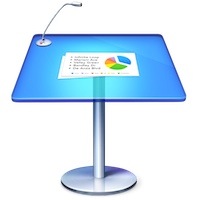I’m prompted to say this to you because of an short article about Gmail whose writer says:
I’ve been using Gmail since 2003 exclusively. It’s awesome. And when I learned the keyboard shortcuts in 2006, it vastly increased my email productivity. I highly recommend taking the time to learn them.
Yesterday I discovered the biggest boon to my email productivity since shortcuts: Gmail Offline, a Google Chrome app that does just what it says: Allows you to read and write email (in the browser) when you’re not connected to the Internet. But that’s not the key point. I haven’t even been offline since I started using it.
Do Your Email Faster by Getting Offline – Ev Williams, Medium (13 May 2014)
He sounds so surprised. Here’s the thing. If you get to your email by firing up Firefox or Safari or Chrome or (twitch) Internet Explorer, then logging on to a site like outlook.com (hotmail.com as was) or laposte.net, you’re reading your email online. (* See that asterisk? It’s important. But shush, I didn’t say it yet.) You’re reading your email online. That’s nice. You can do that from anywhere, absolutely anywhere that you can get an internet connection and it’s fine.
So long as you have an internet connection. You are bollixed if you don’t. And so long as your email provider remains your email provider. A friend recently moved from one broadband supplier to another and in the process was told she would lose her old email address. You know that’s a problem: if there are any statistics into why so many people remain subscribers to AOL then they probably conclude that it is solely to keep that familiar @aol.com address. Same with Hotmail. You keep putting up with the crap because you’ve given everybody that bleedin’ email address and there is nothing you can do about it.
Until forced. Then you change to something good and that may well be Gmail but this is another story.
Back to the online versus offline stuff.
If you work in an office and your PC or Mac there includes Microsoft Outlook, you’re getting your email offline. It might be stored on your company’s network servers but it’s not sitting out there on the internet waiting for you to login or for Microsoft to switch you off.
Back when this used to be an either/or kind of situation, there were advantages and disadvantages to online and offline email. I have always used offline, though, and I’ve done so because it means I have all the email right here. It’s mine and on my Mac and on my backups, you can’t take it away from me without theft and some serious effort.
It’s called using an email client: Apple’s OS X Mail is a client, Microsoft Outlook is a client and email is served to them. Your computer goes off to get email for you and brings it back, you don’t have to keep going to a website or leaving a website tab open.
Also back in the day, leaving that connection open cost you money. I knew someone who stay online while slowly peck-typing her emails, not appreciating that it was only when she hit Send that she needed to be online. I did tell her that and her internet connection did keep dropping the line because, as far as it was concerned, she wasn’t using it for a very long time. But I have no doubt that she persisted until whenever she got broadband.
These days we can have both worlds. I have all the advantages of having my emails on my Mac but they are also on my iPad and iPhone, moreover they are also also on any computer I chose to login to. Where you might have to go to hotmail.com to get your email, I can elect to go to iCloud.com to get mine. I did this most recently at a secure mental health establishment where I wasn’t allowed my iPad or iPhone but could use their office computers.
So that’s all good, then. You can get your email online or offline, whatever what you like, and so long as your supplier doesn’t stiff you, you’re so good to go that you never even realise there’s any choice to be made. Until you do what this Williams writer did and move to an email client, then you find out the other big benefit. The benefit so big that it surprised him and it now surprises me that not everybody knew this:
The reason Gmail Offline makes you faster at your email is because:
It’s freaking fast. Gmail proper is fast, most of the time. But sometimes it takes a second or two (or three or…) to archive or reload your inbox. When you’re plowing through email — especially with shortcuts — that seems like an eternity. Gmail Offline removes those waits, pretty much completely.
Yep. That would do it.
If you’re on Gmail, Williams is enthusing about Gmail Offline, and here’s where we:
*throw in an asterisk.
Purely and entirely to be awkward and not because Google wants to take over the world, Gmail Offline uses your web browser. It has to be Google Chrome with extensions so it’s really turning your browser into something that uses local storage like a regular document-creating application. But it’s your browser. So all that stuff I said about how you can tell you’re reading email online because you use a web browser, not so much.
But offline is faster? Very much.
